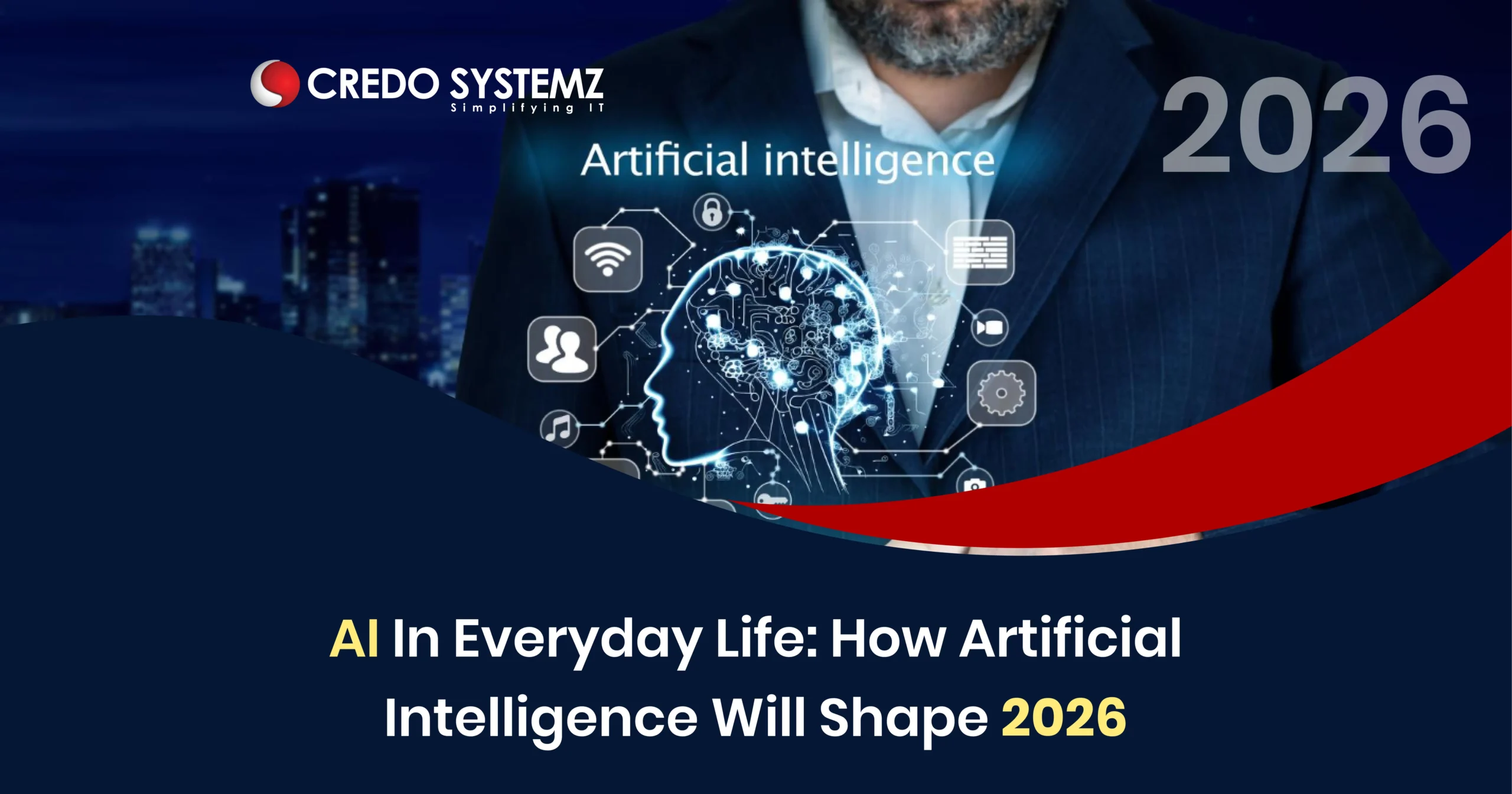
1. Smarter assistants — personal, contextual, always-on
AI assistants will be far more proactive and task-oriented than simple chatbots by 2026. These assistants can manage multi-step chores: reordering groceries, scheduling appointments while negotiating times with other people’s assistants, summarizing long email threads, or preparing a draft response personalized to the recipient and situation.
Enterprises will embed task-specific AI agents into business apps. Gartner predicts a big jump in agent-driven features across enterprise software by the end of 2026. The AI agents can act as personal “operating systems” that coordinate our digital lives.
2. On-device and edge AI make privacy more practical
AI evolution will offer much more capable on-device models for routine tasks like voice recognition, summarization, image editing, biometric authentication. It can keep sensitive data local to your phone or home hub by helping both speed and privacy. Big tech’s pipeline investments into AI infrastructure also mean hybrid solutions that split work intelligently between device and cloud.
On-device AI models provide faster experiences, less dependence on an internet connection, and better options for users who care about data staying on their device.
3. Everyday health monitoring becomes mainstream — with guardrails
AI-assisted health tools will be more deeply integrated in 2026 which will be increasingly used for early warnings and chronic condition management. At the same time, regulatory frameworks are tightening requirements for safety, transparency, and high-risk systems. Healthcare AI deployments will face clearer rules before they reach patients.
4. Work will be augmented — not just automated
Many job roles will be augmented by AI supertools like content creators will get AI co-writers that handle drafts and research, analysts will use AI to explore data faster, and customer support will be triaged by agents that surface context and recommended replies. Organizations are increasingly using AI in multiple business functions, and the focus is shifting to how people and AI collaborate effectively.
5. Smarter homes, cars, and cities — subtle but pervasive automation
AI will quietly optimize comfort, safety, and energy use from thermostats that learn household patterns to cars that use advanced driver assistance on a daily basis.
Public services will pilot AI to reduce congestion, optimize waste collection routes and improve emergency dispatch. Small improvement will accumulate into measurable quality-of-life gains.
6. Creative and entertainment ecosystems go hybrid
Generative AI will continue to democratize content creation like music, short films, personalized games, and locally generated news briefs.
Platforms will balance creator tools with copyright and provenance systems (watermarks, metadata, registries) as regulators and industry respond to misuse and IP questions.
Expect more personalized entertainment recommendations that are actually created for you. Anyone can prototype creative work fast, but ecosystems will be shaped by new rules and content standards.
7. Regulation and responsible AI: the rules start to bite
The EU AI Act and other regulatory moves mean that there will be clearer lines for what’s prohibited, what’s high-risk, and how providers must demonstrate safety and documentation by 2026.
The law’s staged implementation means organizations deploying high-risk systems must meet more compliance checks which is a major shift from 2023–2024’s looser environment.
8. Economic ripple effects and infrastructure spending
AI investment continues to accelerate as massive capital expenditures for data centers, chips, and cloud services are already in motion and will shape what services are available where. That spending fuels innovation but also raises questions about energy use and supply chains.
Analysts expect a significant jump in AI capital investment by 2026. Broader availability of advanced AI features worldwide depends on these underlying investments.
9. Real risks we’ll still wrestle with
As adoption deepens, so do risks: misinformation at scale, biased systems, deepfakes, privacy erosion, and concentration of power among a few cloud/AI providers.
Leaders and policymakers will need to invest in audits, model cards, red-team testing, and public literacy programs. High-impact failures in critical domains will be the hardest to tolerate.
How people can prepare for 2026
- Learn to work with AI by practicing prompt design, model evaluation, and using AI assistants in your workflow. Join Credo Systemz AI courses to enhance your career path.
- Prioritize privacy: use on-device options where available and read app privacy choices.
- Don’t treat AI as an oracle for health, legal, or safety decisions. Use it as a second opinion and consult professionals.
- Stay informed about regulation in your region.
Final thought
By 2026, AI will be more of an invisible scaffolding behind everyday services which means more convenience, smarter personalization, and new creative possibilities and also new responsibilities for developers, companies, and regulators. The key as individuals is to use these tools deliberately and enjoy the convenience.
Want to know more about the course curriculum, career counseling, or video references? Just ping us on WhatsApp!

Join Credo Systemz Software Courses in Chennai at Credo Systemz OMR, Credo Systemz Velachery to kick-start or uplift your career path.
AI Certifications – FAQ 2026
AI assistants will move beyond answering questions and setting reminders. By 2026, they’ll handle multi-step tasks like managing schedules across different people, preparing reports based on your habits and goals..
Instead of replacing, AI will augment many jobs. Workers will use AI for research, analysis, writing drafts, or automating repetitive steps.
Smart devices, apps, and wearables will provide real-time health insights, early detection of conditions, and medication reminders. However, strict regulations will ensure that high-risk medical AI systems are tested, transparent, and safe before use.
Learn to use AI tools effectively in work and personal life. Be cautious with sensitive data and verify outputs. Stay updated on local AI regulations and best practices.
